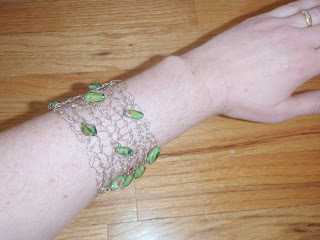Classifications of Vegetables
Each type uses soil in similar ways and share similar pests, and therefore must be rotated with a different classification each year for four years.
- Alliums
Include Onions, Garlic, Scallions, Shallots, and Leeks. - Brassicas
I include Broccoli, Cauliflower, Cabbage, Brussels Sprouts, and Kale. - Crucifers
include Turnips, Radishes, Rutabaga, and Collards. - Cucurbits
Include Cucumbers, Squashes (from zucchini to pumpkin), and Melons. - Legumes
Include Peas and Beans. - Mescluns
I nclude Arugula, Swiss Chard, Chicory, Endive, Escarole, and Radiccio. - Solanaceae
Include Tomatoes, Peppers, and Eggplant.
Companion Plants
Companion plants are plants that mutually benefit each other. This can be anywhere from one plant being appealing (or unappealing) to certain pests which in turn takes care of it's neighbor's pests, to a plant that provides shade or nitrogen to it's neighbor plant for better growing conditions.
Here is a short summary of some vegetables or herbs that grow well together (or not)... orange words in this list are herbs
- Asparagus Parsley, basil, borage, lettuce and tomato (not fennel or dill)
- Basil Tomato, most vegetables and herbs
- Beans Potato, corn, lettuce, eggplant, cucumber, strawberry, celery, carrots, cauliflower, radish, spinach, rosemary, marigolds, parsley (not fennel, garlic or onions)
- Broccoli Onions, leeks and celery
- Brussells Sprout Potato
- Cabbage Onion
- Carrot Peas, onions, leeks, lettuce, chives, sage, chamomile, rosemary (not dill or fennel)
- Cauliflower Onions and leeks
- Celery Tomato, leeks and beans.
- Corn Lettuce, peppers, cucumber, beans and peas
- Cucumber Radish, lettuce, beans, peas, potato and artichokes (not sage)
- Eggplant Beans, peppers and lettuce
- Leeks Cabbage, celery, onion and carrots
- Lettuce Strawberry, radish, carrots, onion, corn and marigolds
- Mint Cabbage and tomato (but I'd plant separately because it grows voraciously, like a weed)
- Onion Lettuce, cabbage and carrots, spinach and tomatoes
- Parsley Tomato, asparagus, carrot and peppermint
- Parsnip Shallots, chives and lettuce
- Peas Cucumber, radish, turnips, corn, carrots, potatoes, spinach and beans (not garlic, dill, fennel or onions)
- Pepper Chili Cucumber, squash and lettuce
- Potato sunflower, green beans, peas and broad beans and marigolds (not cucumbers, squash or tomatoes)
- Pumpkin Corn
- Radish Peas, lettuce, zucchini and nasturtium
- Shallots Carrots, beetroot and mint
- Spinach Strawberry, peas, onions and many other plants
- Strawberry Borage (supposedly really good), lettuce, silver beet and bush beans (I'd plant separately due to their weed-like nature though)
- Tomato Asparagus, peppers and basil
- Zucchini Parsley, tomato, spinach, squash, radishes, corn and marigolds
Here's a summary chart of all vegetables companions. (In this document, green is best to plant; red is worst)
Here are some other random tips:
- plant garlic near roses to keep away aphids
- don't plant potatoes or blackberries near raspberries
- try to keep grass away from apple trees (cuts down pest problems)
- marigolds are great to plant as a border, because they inhibit a variety of pests for vegetables
- dill, coriander and fennel can cause a lot of problems for many vegetables, so be careful with those (maybe co-plant those in a separate pot).
----And here is a helpful chart on helpful bugs and such, from Gaias Garden book (about permaculture--see my post about that).
Here are some other random tips:
- plant garlic near roses to keep away aphids
- don't plant potatoes or blackberries near raspberries
- try to keep grass away from apple trees (cuts down pest problems)
- marigolds are great to plant as a border, because they inhibit a variety of pests for vegetables
- dill, coriander and fennel can cause a lot of problems for many vegetables, so be careful with those (maybe co-plant those in a separate pot).
----And here is a helpful chart on helpful bugs and such, from Gaias Garden book (about permaculture--see my post about that).





